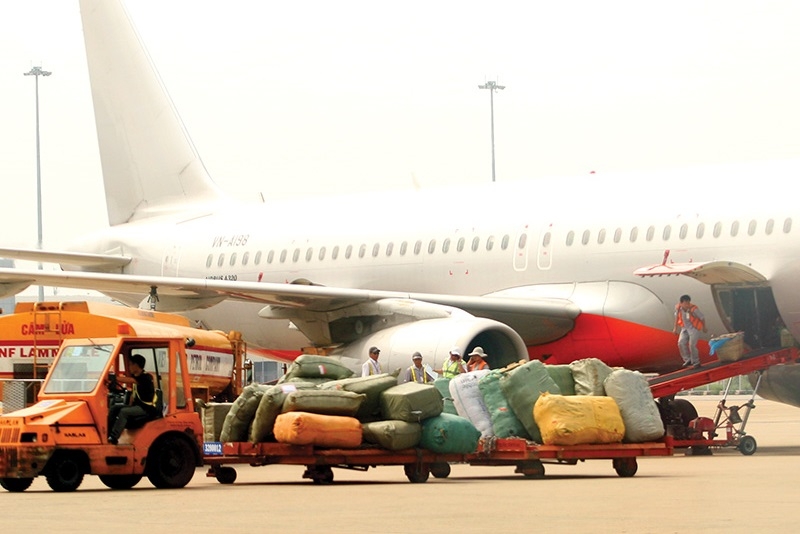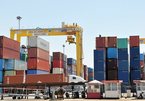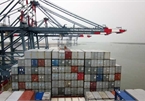 |
| Essential air cargo services in Vietnam are dominated by only three players, leaving little room for competition, Photo: Le Toan |
Noi Bai Cargo Terminal Services JSC (NCTS) at this year’s general shareholder meeting held on June 25 approved its business targets for 2020, including to reach a cargo volume of 350,000 tonnes, a revenue of VND700 billion ($30.5 million), and after-tax profit of VND191.3 billion ($8.3 million). All goals are set slightly lower than last year amid the serious impact of COVID-19 on the global market.
Being a subsidiary of Vietnam Airlines, NCTS, which has charter capital of nearly VND262 billion ($11.4 million), is dominating the air cargo service market in northern Vietnam, specifically at Noi Bai International Airport, with a market share of 61 per cent.
Currently, this northern service market has only three key players – NCTS, Air Cargo Services of Vietnam (ACSV), and ALS Cargo Terminal (ALSC). Meanwhile, other domestic and international service providers are finding it difficult to get a slot in the market.
Struggling newcomers
Nguyen Tuong, deputy secretary general of the Vietnam Logistics Business Association (VLA) told VIR, “Many of our members have been struggling for years to enter this profitable business segment, but they still fail regardless of their strong capacity, and no legal ban from the state.”
At present, prevailing rules allow companies to join the market if they are capable of meeting the requirements of Decree No.89/2019/ND-CP dated November 2019, amending and supplementing some articles of Decree No.92/2016/ND-CP issued in 2016 on conditional business sectors in the aviation industry. Article 15 of Decree 89 states that businesses are allowed to participate in aviation service business at airports, including cargo storage and cargo handling services, if they get a certificate for these at the airports. In order to get such a certificate, businesses must first meet the requirements of Article 65 of the Law on Civil Aviation of Vietnam, according to which the company has to have a capable apparatus and qualified staff.
Moreover, such businesses should also be appraised by the Civil Aviation Authority of Vietnam (CAAV) and must have minimum capital of VND30 billion ($1.3 million). Also, the foreign ownership in this industry is capped at 30 per cent of a business’ charter capital.
These conditions are met by many Vietnamese logistics firms. In addition, administrative procedures in this field are also further simplified under Decree 89.
Despite decrees 92 and 89, hundreds of capable companies are unable to get a foothold.
Meanwhile, NCTS is dominating the market with a wide range of customers, including 28 of the 60 airlines flying to Noi Bai International Airport such as AirAsia, China Airlines, and Singapore Airlines, among others.
Moreover, the company has more than 400 forwarding agents, including Nippon Express, Kuehne Nagel, Yusen Logistics, and Schenker, as well as a long list of freight operators like Asiana Airlines, Qatar Airways, Etihad Airways, and China Southern Airlines.
ACSV and ALSC both hold the rest of the market share that is not already occupied by NCTS, thanks to their powerful scopes of big-name customers.
A representative of NTCS explained that Noi Bai International Airport has very limited infrastructure in terms of space. “Many forwarders are capable of building cargo terminals outside the airport. However, the problem is the risk of having no airlines to sign service contracts with, because of the inconvenience and the state regulation that air cargo cannot be shipped from a very far distance to the airport,” the representative added.
Industry insiders said that security and safety are two other reasons why this business segment remains restricted to new players.
Room for the future
At present, many countries in the world feature an open-air cargo handling market, attracting the involvement of many players, thus creating a competitive market.
Vietnam’s aviation market – that the International Air Transport Association (IATA) forecast to be one of the world’s fastest-growing and the fastest in Southeast Asia with a projected average growth of nearly 14 per cent in the next five years, reaching 150 million passengers by 2035 – seems likely to become a magnet to both domestic and international cargo handing service providers when more favourable conditions come.
In late June, the Ministry of Transport kicked off a project to upgrade the runway of Noi Bai International Airport with the total investment of VND2.03 trillion ($88.25 million). The upgrade is expected to be completed in 2022, thus enabling it to also handle Airbus A350s, Boeing 787-9s, or 787-10s, and many other long-range, wide-body airliners.
Another positive trend could unfold under Hanoi’s transport development planning for 2030, with a vision towards 2050, approved by the prime minister. Accordingly, the airport could accommodate over 260,000 tonnes of cargo annually, and 500,000 tonnes of cargo and 50 million passengers a year after 2030.
But last year, total cargo volume via Noi Bai had already reached nearly 700,000 tonnes, also equal to the 2018 figure. The expansion of the airport and an increase in the number of air passengers could directly drive the demand for effective ground and cargo handlers, thus giving an opportunity for cargo forwarders to penetrate.
On the flip side, this development could bring about more opportunities for the already dominating three NCTS, ACSV, and ALSC to increase revenues. VIR
Bich Thuy

Vietnam's logistics firms see few opportunities in EVFTA
Vietnamese logistics firms’ ability to access the EU market will not be easy because rivals in the EU are strong anf clients there require high-quality services.

Vietnam’s logistics industry hit hard by Covid-19 pandemic
The Vietnamese logistics industry is among those hit the hardest by Covid-19, as the unpredictability and duration of the pandemic have presented multiple challenges in both the short and long terms,